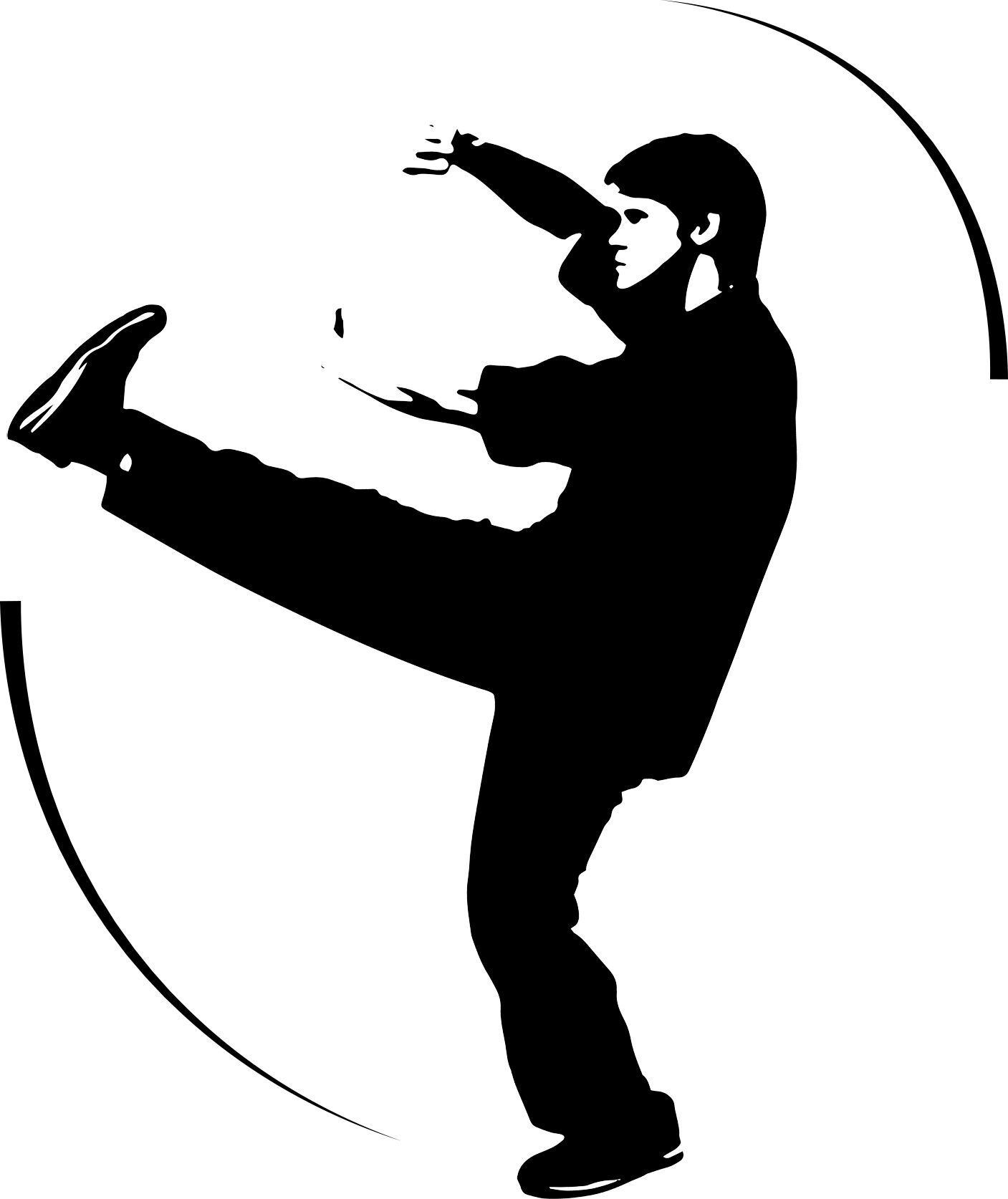
When one begins Wing Chun at Authentic Kung-Fu, Fort Worth, one of the first things one is shown is how to hold the Yee Chi Kim Yeung Ma, the basic stance of Wing Chun Kuen.
Training the Yee Chi Kim Yeung Ma is done by creating dynamic tension between the legs and maintaining it for increasingly long periods of time. Though one may think this process could be achieved more quickly through weight training, it is not used in Wing Chun. Weight lifting as a strength building method has gained ascendency only in the last century. Before that, strength has always been developed by dynamic tension and body weight exercises. In fact, the isolated nature of weight training would not enable the unified body awareness for the effective use of the Yee Chi Kim Yeung Ma in combat.
While the lower body is being held in dynamic tension, the upper body is connected to the lower by pressing the hips forward till they lock. This causes a slightly rearward slant to the Wing Chun practitioner’s body. This slant is reminiscent of the rearward slant of Western bare knuckle boxers of the 1800’s and is there for the same reason. When the body can be held this way, the head is just far enough away to be deceptively difficult to hit.
The path to achieving this signature posture is to adduct the legs, creating dynamic tension, press the hips forward, engaging the usually weak hip flexors, and holding both for increasingly long periods.
The new student finds that these muscle groups, seldom challenged by 21st century lifestyle, tire and ache in a disappointingly short period of time. The answer, rest a moment and try again. It is a painful and frustrating process that only improves if one continues in the face of it.
While this is happening, the arms are to utterly relax. There is no tension in the Wing Chun guard. In many styles, the guard itself becomes the first defense against the blows of the opponent through shielding vulnerable areas. The Wing Chun guard does not shield anything. Instead, the arms wait in a centrally-located position along the Jong Sin, the center line of the body. It leaves the vulnerable points seemingly exposed to the attacks of the opponent. To think this would be a mistake.
There can be no overt use of muscular strength in either guard, defensive movements or striking. There can be no tension in the arms, even on impact. The tension associated with muscular strength is a fatal flaw for the new Wing Chun practitioner. In fact, there is a Kuen Kuit, the traditional maxims of the Wing Chun style, which says, Chor Hoc Mo Yung Lik, “The beginning student must not use strength”.
At first, this means the new student is not able to hit hard. The number of strong men who could let go of their reliance on strength and, in frustration, ultimately leave Wing Chun are too numerous to imagine. With time, and correct practice, the student will hit incredibly hard and fast but now is not that time.
So, holding these seemingly contradictory qualities in effect for increasingly longer periods, enduring the fatigue, frustration and sometimes pain is part of the Gayben Gong, the essential fundamental training of the style. It is the crucible through all new Wing Chun students must pass.
With practice, over a month or two, the student gains the necessary strength and relaxation. The ability to perform precise evasive maneuvers eventually accompany the relaxed performance of hand techniques. The punches, once light and ineffective, begin to hit with a heaviness like being struck with hammers. Also, because they are relaxed, there is no leverage point for blocking to effect. The Wing Chun practitioner’s punches fall like rain through attempts at blocking; rendering the opponent’s attempt at defense or counter utterly ineffective. It is the softness of the Wing Chun practitioner that overcomes the hard strength of the opponent. Hence the wisdom of the admonition against muscular strength.
Throughout this process, whenever the new student returns to class, the seniors always greet the new student heartily. There are smiles and friendly exchanges. Unspoken is the knowledge that, if the new student is to succeed, he or she will have to pass through this time alone. It is the path walked by all before them. It is how one enters the world of the Wing Chun practitioner. The reward is mastery of a legendary style of Kung-Fu and to gain skills few can imagine. Along with this, the student becomes part of a Kung-Fu family with a lineage, history and tradition spanning centuries.

Recent Comments